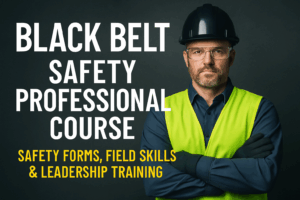Why Truck Drivers Must Learn English | CDL Safety & Compliance
English is critical for truck driver safety, DOT compliance, and lives on the road. Learn why speaking English is more than a legal requirement — it’s a lifesaver.
More Than Just a Language
Every time a trucker rolls down the highway, they carry more than cargo — they carry the weight of responsibility. In the United States, English proficiency isn’t just a preference for commercial drivers — it’s a requirement. From safety briefings to road signs, being able to understand and respond in English can be the difference between smooth delivery and deadly disaster.
Safety Depends on Clear Communication
🚨 Reading Road Signs and Hazard Warnings
Truck drivers face constantly changing conditions — detours, construction zones, and dangerous weather. Road signs are in English, and misreading one can result in wrong turns, bridge collisions, or entering restricted zones.
📞 Communicating with Dispatch and Law Enforcement
Whether you’re reporting a mechanical issue or speaking with DOT inspectors, a language barrier can delay help, trigger misunderstandings, or escalate a minor issue into a major one.
💡 Real Example:
A 2022 NTSB report noted multiple near-miss incidents where non-English-speaking drivers misunderstood emergency instructions, leading to unsafe stops and confusion on major interstates.
It’s the Law: DOT & FMCSA Language Requirements
According to the Federal Motor Carrier Safety Administration (FMCSA), all drivers operating commercial motor vehicles in the U.S. must be able to:
- Read and speak English sufficiently to converse with the general public
- Understand traffic signs and signals
- Respond to official inquiries
📄 FMCSA CDL Regulations – Language Proficiency
Failing to meet this requirement can result in disqualification, delays in CDL testing, or even termination.
Learning English Doesn’t Have to Be Hard — Even on the Road
📱 Tools That Work for Drivers
- Duolingo or Babbel – Easy mobile ESL apps
- “The English for Truckers” Podcast – Learn while driving
- YouTube ESL lessons for DOT terms and safety lingo
🤝 How Employers Can Help
Companies can sponsor ESL training, provide safety instructions in simplified English, and encourage peer mentorship.
Real-Life Risks Non-English Speakers Face
- Missing low-clearance signs → trailer collisions
- Failing DOT inspections → delays, fines
- Incorrectly logging hours → violations
- Confusing route instructions → lost time and fuel
- Misunderstanding safety drills → serious injury
❓ FAQ
Q: Can I get a CDL if I don’t speak English?
🅰️ No. You must demonstrate English proficiency before being issued a U.S. CDL.
Q: What if I’m bilingual but stronger in another language?
🅰️ That’s okay — as long as you can meet FMCSA’s “sufficient” English standard for communication and safety.
Finally Learning English Saves Lives
Learning English isn’t about losing identity — it’s about gaining clarity, confidence, and compliance. When you’re out there on the road, understanding a single word can save your license, your cargo, or your life.
Ready to improve your English for trucking safety and DOT compliance?
👉 Join Our Free ESL Safety Challenge for CDL Drivers
📥 Download the “English for Truckers” Cheat Sheet and get started today.

